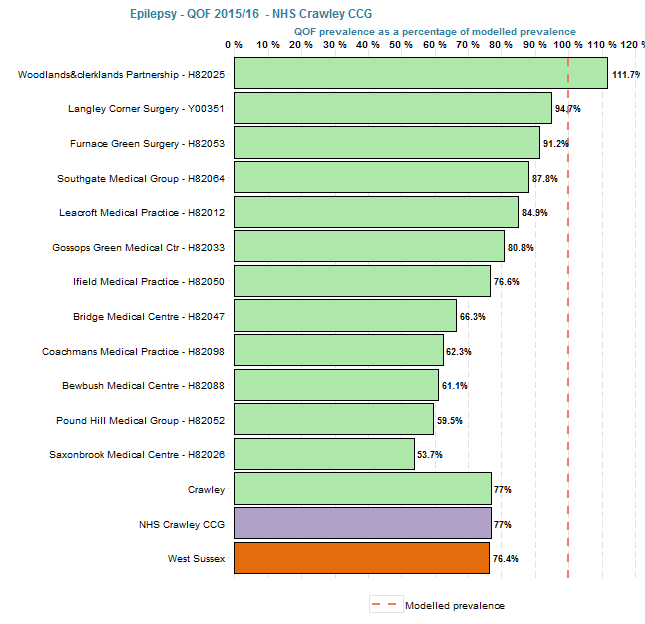Epilepsy
Epilepsy is a condition that affects the brain, causing repeated seizures. It is estimated that almost 1 in every 100 people has epilepsy (NHS choices).
The graph below shows a breakdown of QOF (Quality Outcomes Framework) information for each locality (distinguished by colour) with each bar representing an individual practice. Each bar represents the percentage of people on GP registers compared to the modelled estimates for the condition. A value below 100% suggests that fewer people registered at a GP are recorded with that condition than the modelled prevalence estimates, and a value over 100% suggests that the prevalence of people registered at a GP exceeds the modelled prevalence of people with that condition at that surgery.
Comparing the registered with the predicted prevalence provides an estimate of an unmet, or undiagnosed need within the local population. It should be noted that prevalence figures are produced by applying nationally researched assumptions to each GP practice’s population and, as such, should be treated with some caution.
The figure shows that the QOF prevalence of epilepsy (as a % of modelled prevalence) is varied across NHS Crawley CCG, ranging from 53.7% of the modelled prevalence in Saxonbrook Medical Centre to 111.7% of the modelled prevalence in Woodlands and Clerklands Partnership. This may suggest variation in the number of people registered with practices for the treatment of epilepsy across the CCG, with greater than expected numbers in some areas and lower than expected numbers in others.
It should be noted that the recorded prevalence of Epilepsy at GP level for the QOF is for those aged 18 years and over.

Data sources
- QOF: 2015/16 (published in November 2016)
- Practice Population: GP Practice Population (as at 31st March 2016)
- Prevalence Model: ONS (Purcell et al)/General Practice Research Database (1998)